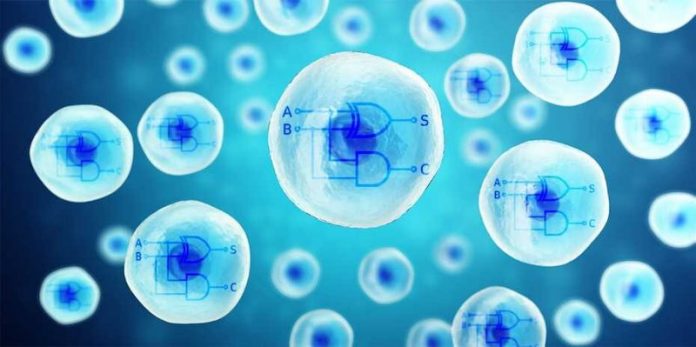
In a new study, researchers have integrated two CRISPR-Cas9-based core processors into human cells and created a biosynthetic dual-core cell computer.
The finding is a huge step towards creating powerful biocomputers.
The research was conducted by a team from ETH Zurich.
One goal of synthetic biology is controlling gene expression through gene switches based on a model borrowed from the digital world.
Recent research has been trying to build this type of digital circuits with the help of protein gene switches in cells.
However, the current method has several disadvantages and make it hard to be used widely.
In the current study, the team found a way to use biological components to construct a flexible core processor. The CPU can accept different kinds of programming.
The processor is based on a modified CRISPR-Cas9 system and can work with as many inputs as desired in the form of RNA molecules.
The researchers created a biological dual-core processor by integrating two cores into a cell. They used CRISPR-Cas9 components from two different bacteria.
The new biological computer is very small but in theory, it can be scaled up to any conceivable size.
It can be used to detect biological signals in the body, process the data and responds to them accordingly.
The researchers suggest that the computer will be very useful in medicine such as cancer treatment.
They plan to integrate a multicore computer structure into a cell. This would increase computing power and better than the current dual-core structure.
The lead author of the study is Martin Fussenegger, Professor of Biotechnology and Bioengineering at the Department of Biosystems Science and Engineering at ETH Zurich.
The study is published in PNAS.
Copyright © 2019 Knowridge Science Report. All rights reserved.



